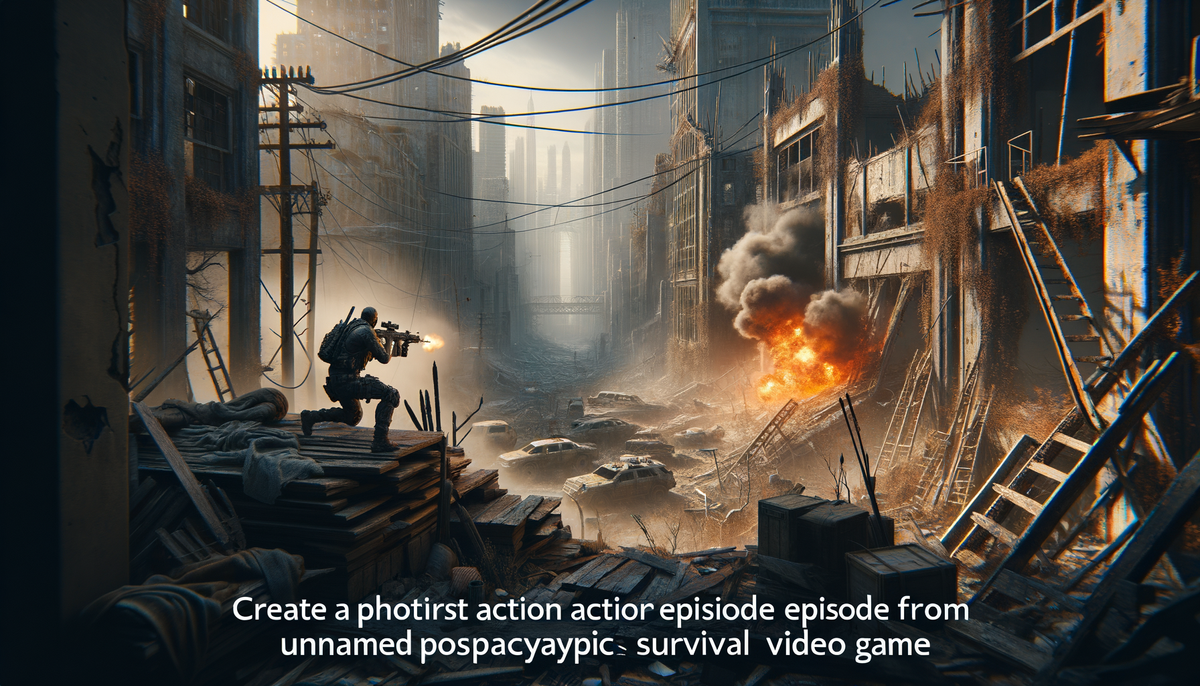The Impact of TLOU Episode 4: An In-Depth Look into "Scars"
Explore the intense action and deep emotional narratives in TLOU Episode 4, "Scars," where geopolitical conflicts and personal stakes intertwine.

The Impact of TLOU Episode 4: An In-Depth Look into "Scars"
The Last of Us Season 2, Episode 4: "Scars" has captured audiences worldwide, driving significant conversation and analysis among fans and critics alike. This episode, a key turning point in the series, showcases not only intense action but also deep emotional storytelling that enriches the narrative.
Overview of Episode 4: "Scars"
Released on May 4, 2025, Episode 4, titled "Scars," unfolds with tensions high as Ellie and Dina navigate the treacherous landscapes of Seattle. Available on HBO and Max in the USA, and various international platforms, this episode continues to explore the intricacies of Ellie and Dina's journey, as they find themselves deeper within the city's dangerous factions.
The episode opens with the now-iconic subtitle "Seattle Day One," setting the stage for a gripping chapter filled with personal and external conflicts. Director Jeremy Webb highlights the psychological intricacies of Ellie’s revenge-driven path, layered with the moral complexities presented by new characters and shifting allegiances.
Plot Dynamics and Development
As the series progresses, the plot takes a significant leap forward with Ellie and Dina encountering Isaac, the enigmatic leader of the Washington Liberation Front (WLF). Played by Jeffrey Wright, Isaac’s presence anchors the episode's dramatic tension, as his character embodies the fine line between hero and villain within this post-apocalyptic setting.
The viewer is drawn into an expansive showdown between the WLF and the Scars, also known as Seraphites. This conflict, marked by its intensity and moral ambiguity, propels our protagonists into new narrative territories. The evolving dynamics offer viewers fresh perspectives on survival, ethics, and community in the face of chaos, echoing themes well-known to fans of the original game.
One particularly intense sequence involves Ellie and Dina’s escape from infected in Seattle's infamously dark subway tunnels, a scene that skillfully mirrors pivotal moments from the original "The Last of Us" game. These action-packed developments are balanced with quieter, poignant elements as seen in Ellie’s guitar performance for Dina, which reveals depth in their relationship and personal struggles.
Character Evolution and Performances
Central to Episode 4's resonance are the compelling performances of Bella Ramsey and Storm Reid, who portray Ellie and Dina, respectively. Their on-screen chemistry and emotional vulnerability add layers to the narrative, especially during moments where emotions shine through the chaos and violence surrounding them. Ellie’s internal struggle becomes more pronounced, pushing her character development as she grapples with decisions driven by revenge versus empathy and forgiveness.
Jeffrey Wright’s introduction as Isaac is another highlight, providing a multifaceted portrayal that enriches the understanding of the WLF’s internal dynamics and ideological conflicts. His presence on screen is as formidable as it is unsettling, setting up intriguing conflicts that will shape the ongoing story arc.
Themes and Future Directions
"Scars" serves as both a climactic point and a narrative bridge to future episodes, enhancing the show’s thematic depth. The portrayal of harsh moral landscapes, coupled with the tangible sense of threat from various factions, keeps audiences engaged and speculative about future episodes.
The episode expands the series’ world-building efforts, moving beyond Jackson into new territories rich with narrative potential. As Ellie and Dina face these challenges, the series cleverly juxtaposes human relationships against the backdrop of societal collapse and factional warfare, promising viewers an exploration of resilience and the human spirit.
Practical Insights and Conclusion
For fans and professionals analyzing "The Last of Us," Episode 4 delivers significant insights into character motivations and thematic richness. It poses open-ended questions about morality and survival, encouraging thoughtful discourse in the community. Engaging with these themes could lead to impact narratives and character development strategies applicable across various forms of storytelling.
In conclusion, "Scars" not only advances the plot but intensifies the emotional stakes for characters and viewers alike. As the series continues, professionals and enthusiasts are encouraged to dive deeper into these storylines to gain a richer understanding of the narrative complexities of "The Last of Us." For those interested in exploring further, analyzing how these storylines align with broader media strategies could provide valuable insights.
Call to Action: Visit our [website](http://www.newsomix.com) to explore more insights and updates on "The Last of Us." Dive into our comprehensive analysis and join the discussion about the future twists and turns awaiting Ellie and Dina. Stay informed and engaged with the latest in TV storytelling and entertainment news!




